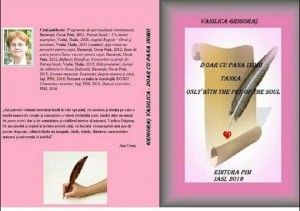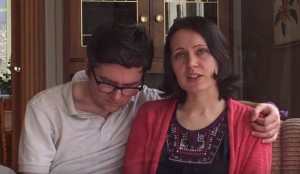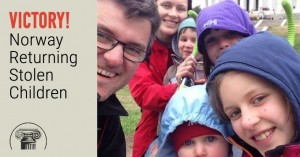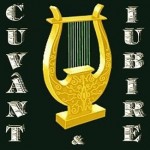
Orice carte dăruită implică, convingerea autorului că meriţi să fii părtaşul celor ce-au fost scrise între cele două coperte, să empatizezi cu stările sale, să te miri, să te bucuri de la o pagină la alta, să-l descoperi şi să-i descifrezi coordonatele interioare. Este ca o invitaţie în sanctuarul secret al creaţiei, în care oglinzile scrisului ne vor dezvălui încă o faţă a sa, până acum neştiută. Aşadar, sunt în posesia manuscrisului, viitoare carte Doar cu pana inimii, poeme tanka, autor Vasilica Grigoraş, editura PIM, 2016, ediţie bilingvă, română-engleză, în traducerea Alinei Lavinia Grigoraş. Structurată într-o manieră neconvenţională şi originală, cartea ne invită într-o călătorie spirituală, pe verticală aş spune, o piramidă în opt trepte, pe fiecare treaptă primenindu-ne urcuşul „tatami-ul” frumoaselor poeme, miniaturi concentrate cu interpretări multiple. Pornind de la observaţii exterioare, simple dar care provoacă între spirit (kokoro) şi gând (omoi) acea osmoză poetică ca între om şi natură, simplă şi de efect, specifică stampelor nipone, se rotunjesc filozofii de viaţă în frumoase poeme.
Tanka, poate unul dintre cele mai vechi genuri de poezie japoneză, din care s-a desprins şi haiku-ul, era apanajul unei clase sociale elevate, cultă şi privilegiată. Prinţi şi prinţese cu paşii mărunţi, gheişe fermecătoare în kimonouri, cu evantaie şi broşe în păr, îşi desenau şi scriau astfel de poeme pe hârtii de orez, pe suluri de mătase, într-un alt timp, într-un altfel de ritm, numai de ei ştiut. Şi să nu uităm de carnavaluri, teatrul umbrelor, ceremonia ceaiului, exotismul efemer al florii de cireş (sakura), admiraţia lor (hanami), al respectului faţă de natură, al adoraţiei faţă de imperiu sau farmecul schimbării anotimpurilor. Maxima simplitate, delicateţea şi lirismul dar şi puterea de sugestie a spiritului nipon ajung până la noi nealterate în poeme tanka, haiku, renga şi haibun, pur şi simplu vrăjindu-ne şi cucerindu-ne, graţie unor poeţi ca: Fujiwara no Teika, Matsuo Bashō, Kobayashi Issa, Yosa Buson, Masaoka Shiki dar şi contemporani. La noi în ţară inegalabilul Şerban Codrin, dar şi Magdalena Dale, Maria Tirenescu. Şi, poate că, autoarea, cum singură afirmă cu umor, într-un interviu RO-KU, să fi trăit într-o altă viaţă poezia armoniei, de ce nu?!! starea şi filozofia zen nefiind întâmplătoare având în vedere studiile, formarea sa profesională şi vocaţia filozofică, acest volum şi nu numai.
Vom întâlni pe parcursul lecturii procedeele stilistice proprii liricii nipone: paradoxul, antiteza, elipsa, poemele atingându-şi scopul, adică să spună puţin şi să semnifice mult. Poemul tanka are două componente: versurile de sus (kami no ku), trei versuri 5-7-5 silabe, şi cele de jos (shimo no ku), două versuri de 7-7 silabe, despărţite de linioară (cezura kireji), cele două părţi completându-se armonios.
La baza piramidei se află Primenirea, fin presărată cu umor, pentru ca urcuşul, vorbeam mai sus de trepte, să fie unul lin şi plăcut: Fluturi bezmetici / căutându-şi rostul / printre trandafiri – unii se-ndreaptă spre flori / însă alţii spre stomac.
Pentru Estivale definitorie şi esenţială este celebrarea anotimpului specific titlului, plinătatea naturii, dăruirea şi revărsarea frumuseţii în ochii privitorului, iar spiritul ludic, ca într-un joc, ţine isonul naturii generoase cu firul gândului şi imaginaţiei, pentru întregirea poemului, ca aici: În zorii zilei / pajiştea plină de flori – în zborul lui / şi cucul a amuţit / văzând sânzienele.
În Melancolii frecvente sunt umbrele, bătrânul cocor, singurătatea, frunzele căzând, amintirile, toate fiind ipostaze succesive ale marii treceri prin toamna vieţii / răsfoind cartea verii /.
Florile iernii sunt nelipsite în Armonii de Cleştar, gerul nu va ştirbi frumuseţea poemelor, vor străluci în lumina zăpezii ca şi gândul din care izvorăsc: Iarna sădind / flori de gheaţă în geam / şi bujori în obraji – şi soarele păleşte / de-atâta frumuseţe.
Pe treapta Iubiri cuvintele se aşază în forma poemelor controlate doar de ceea ce căldura inimii imaginează, trăiri ordonându-se aproape cronologic. Vom întâlni iubirea din pruncie faţă de bunici, părinţi, apoi primii fiori: şoapta dulce răzbate-n / dialogul ochilor; îndrăgostirea: Primul vis din an – mă oglindesc în seninul / din ochii tăi dragi / cucerind împreună / cerul plin cu stele; autoarea nu uită să ne amintească de înţelepciune şi iubirea divină: Plimbarea în parc – din pruncie până la adânci bătrâneţi / e-o rodnică lectură / despre iubirea vieţii.
Urmează Introspecţii, cea mai consistentă parte a cărţii, ca număr de poeme dar şi ca mesaj. Toate poemele au o notă voit ascendentă, vorbesc despre trăiri lăuntrice, aspiraţii, elanuri, despre amintirea zborului înscris în fiinţă, într-un cuvânt, focul veşnic, sinele: ex Corabia vieţii / hălăduind pe valuri – îngenunchind / deschid inima spre Cer / să pătrundă lumina; sau Căutând calea / alerg uşor tremurând – speranţa m-ajută / s-aud iarba cum creşte-n / tainic murmur de izvor.
Cum altfel dacă nu cu răbdare ajungem la Florile Nădejdii, un grupaj de poeme, care vorbesc despre pioşenie, cu privirea aţintită spre tăriile cerului: pregătindu-ne / de-nviere prin moarte / spre tăcerea albastră, despre binecuvântare şi credinţă. Şi poemul, aş spune de suflet al autoarei:
Noaptea aşterne
pagini albe în calea
paşilor timizi –
doar cu pana inimii
scriu poezia vieţii
Penultimul vers dând şi titlul cărţii.
Pe ultima treaptă, denumită La izvorul neamului, numită de mine cea a Înălţării, se regăsesc poemele de mulţumire şi recunoştinţă, cuvintele şi limpezimea imaginii urmărindu-ne şi după lectură. Ex. Pe vechiul sipet / stă cartea de căpătâi – doar în lumină / învăţăm alfabetul / de aur al iubirii.
Am parcurs volumul structurat inedit în cele opt părţi, cu onoarea şi atenţia pe care o merită munca de creaţie şi cunoaştere a valorii cuvântului scris, tandru atins nu numai de pana inimii dar şi de seninătatea şi echilibrul interior al autoarei, Vasilica Grigoraş. M-am pierdut şi regăsit în lectura acestei cărţi, cu bucuria recunoaşterii unui gen de poezie drag mie, călăuză fiindu-mi imaginile, ideile, trăirile, dăruirea, caracteristice autoarei şi universului ei inefabil.
Ana Urma
Vaslui, 10.01.2016
Steps up the light
Any dedicated book implies the author’s conviction that you deserve to take a share in the things written between the two covers, to empathize with his feelings, to wonder, to enjoy any word from one page to another, to discover the author and to decode his inner coordinates. It’s like an invitation to the creation’s secret sanctuary, where the mirrors of the writing will reveal one more face of his, unknown so far. Therefore, I came into the possession of the manuscript, the future book „Only with the pen of the soul”, tanka poems, author Vasilica Grigoraş, PIM Publishing House, 2016, bilingual edition, Romanian-English, translated by Alina Lavinia Grigoraş.
Built in an unconventional and original way, the book invites us to a spiritual trip, I would say vertically, a pyramid on eight levels; on each level the uprise of the beautiful poems’ „tatami” is refreshing us, like some thumbnails focused with multiple interpretations. Starting from exterior observations, simple but which stir between spirit (kokoro) and thought (omoi) that poetic osmosis like between man and nature, a simple, dramatic osmosis, typical to the Nipon plates, life philosophies are rounding out in beautiful poems.
Tanka, maybe one of the oldest types of Japanese poetry, where haiku also came off, is the appanage of an elevated social class, cultivated and privileged.
Princes and princesses with mincing steps, charming geishas wearing kimonos, fans and brooches in their hair, used to draw and write such poems on rice papers, on silk bundles, in another time, in a different kind of rhythm, known only by them.
Let’s not forget about carnivals, the theatre of shadows, the tea ceremony, the fugitive exotism of the cherry blooms (sakura), their admiration (hanami) and respect to nature, adoration to the empire or the charm of the season shift.
The maximum simplicity, the delicacy and lyrism, but also the power of suggestion of the Nipon spirit come to us unspoiled in tanka, haiku, renga and haibun poems, just charming and conquering us, due to such poets like Fujiwara no Teika, Matsuo Bashō, Kobayashi Issa, Yosa Buson, Masaoka Shiki, but also contemporaries.
In our country, there is the unique Şerban Codrin, but also Magdalena Dale, Maria Tirenescu. And maybe the auhor, like she is stating in a RO-KUinterview, might have lived the harmony poetry in another life, why not?!! The zen state and philosophy are not coincidental in this volume, considering her studies, her philosophic professional training and vocation.
We shall meet during the reading several tropes typical to the Nipon lyrics: the paradox, antithesis, ellipse, with the poems achieving their purpose, meaning to say less and signify more. Tanka poem has two components: the upper lines (kami no ku), three lines 5-7-5 syllables and the lower lines (shimo no ku), two lines of 7-7 syllables divided by the dash (cezura kireji), with the two parts harmoniusly complementing.
At the bottom of the pyramid there is „The Instauration”, gently sprinkled with humour so that the ascent, as I talked about paces above, should be an easy and pleasant one: Giddy butterflies / looking for their mission / amid roses- / some are heading to the flowers / but others to the stomach.
For the Summer-like ones, the celebration of the season from the title is defining and essential, the fullness of nature, the dedication and the effusion of the beauty in the looker’s eyes, while the ludic spirit, like in a game, is making a pendant to the generous nature with the train of thought and of imagination to the replenishment of the poem, just like there: At down / the meadow full of flowers- / in its fly / the cuckoo / also stilled / seeing the bedstraw.
In the Blues, the shadows, the old crane, loneliness, leaves falling down, memories are frequent, all of them being successive states of the great passing through the autumn of life / skimming the summer’s book.
The flowers of winter could not miss in the Crystal Harmonies, the frost will not impinge on the beauty of the poems, they will shine in the snow’s light like the thought where they are springing from: Winter sowing / ice flowers on the window and / rosy about the gills- / and the sun is fading / because such a beauty.
On the Love’s stairs the words are laying down in the guise of the poems controlled only by what the heart’s warmth is imagining, with feelings ranking almost chronologically. We’ll meet the love from the babyhood to grandparents, parents, then the first thrills: The first dream of the year- / I’m mirroring in the azure / of your dear eyes / conquering together / the starlight sky; the author doesn’t forget to remind us of wisdom and divine love: The walk in the park- / From babyhood until / great age/is a fruitful reading / about the life’s love.
Introspections chapter follows, the most consistent part of the book, in number of poems but also in message. All poems have a voluntarily upward note, talking about inner feelings, aspirations, zeals, about the memory of the flight enrolled in the existence, in one word, the eternal flame, the self: e.g. The life’s ship / is haunting across the waves- / kneeling down / I open my heart to the Heaven / for the light to go in or Searching for the way / I am running slightly trembling- / hope helps me / hear the grass growing in / covert spring murmur.
How else if not with patience we reach the Flowers of Hope, a group of poems talking about piousness, with the look on the strengths of the sky: getting us ready / for the resurrection through death / to the blue silence, about blessing and faith. And the poem so dear to the author:
The night lays
white pages in the way
of timid steps –
only with the pen of the soul
I am writing the poem of life
The last but one rime is also borrowing the book’stitle.
On the last level, entitled At the Origin Spring, which I called the Resurrection one, there are gratitude poems, with the words and the brightness of image following us also after reading. E.g Leaning on the old coffer / the fundamental book- / only in the light / we learn the golden / alphabet of love.
I read the volume orginally structured in eight parts with the honour and attention that the creation and knowledge work of the written word’s value really deserve, a a loving word touched not only by the pen of the soul, but also by the serenity and the inner balance of the author, Vasilica Grigoraş. I lost and found myself while reading this book, with the happiness of a poetry genre so dear to me, with the images, ideas, feelings, dedication typical to the author and to her ineffable universe guiding me.
Ana Urma
Vaslui, 10.01.2016












 MIKE DONNELLY
MIKE DONNELLY



